
A reversible reaction is one that does not go to completion, this means that we end up with a mixture of reactant and products. Given enough time a reversible reaction in a closed system will reach equilibrium. Le Chatelier's principle can be used to predict what will happen to the amounts of reactants and products in an equilibrium mixture if the temperature, pressure or concentration of one of the reactants or products is changed in some way. However Le Chatelier's principle cannot give exact values for example on how the concentration of a particular reactant or product will change; that is where equilibrium constants come into play.
Consider a reaction that we are all familiar with, the Haber process for the synthesis of ammonia gas:
If lots of flasks different flasks were filled with different amounts of nitrogen, hydrogen and ammonia and we waited until all the flask were at equilibrium
then it would be possible to measure the concentration of each of the reactants and products in the equilibrium mixture and look for any relationship between them. Well the relationship which was found by doing exactly this can be
summarised as follows.
For any reversible reaction at equilibrium such as the one below:
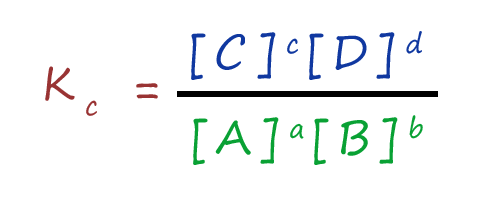
Kc is the equilibrium constant and the subscript c refers to concentrations in mol dm-3. The square brackets; [] are used to indicate that we are using concentrations in mol dm-3 for all of the reactants and products. The equilibrium constant is a ratio of the concentration of the products over the reactants, with each reactant and product concentration raised to the power of the coefficients in the balanced equation for the particular reaction in question. So for the Haber process we could write an expression for the equilibrium constant as:
This will give an expression for the equilibrium constant for the Haber process of:
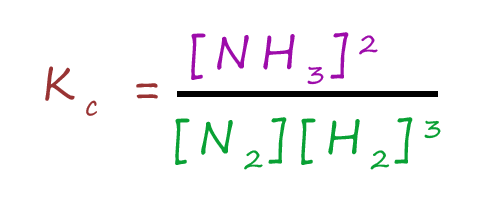 The equilibrium constant is easily written from the balanced symbolic
equation, for example consider the following which gives the equation for formation of sulfur trioxide gas from sulfur dioxide:
The equilibrium constant is easily written from the balanced symbolic
equation, for example consider the following which gives the equation for formation of sulfur trioxide gas from sulfur dioxide:
This will give an expression for the equilibrium constant for the formation of sulfur trioxide of:
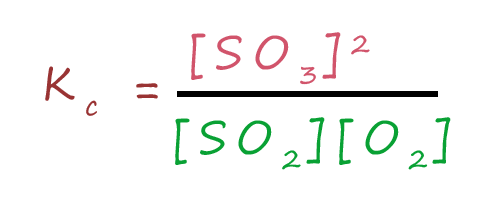
Hydrogen iodide gas can be prepared by reacting hydrogen gas and iodine according to the following equation:
This will give an expression for the equilibrium constant for the formation of hydrogen iodide of:
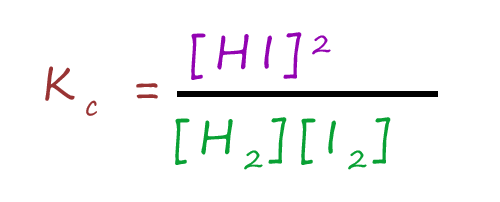
From the examples above you should note that the concentration of the products in mol dm-3 appears on the top line or numerator of the expression for the equilibrium constant. The denominator or base line of the equilibrium constant expression is where the concentration of the reactants in mol dm-3 are written. Each concentration term for the reactants and products is raised to power of the number in front of its formula in the balanced equation, that is the number of moles present.
The units of the equilibrium constant depend upon the stoichiometry (number of reacting moles) of the particular equation. For example consider the following reaction:

Example 2: Consider the following reaction:

Example 3: Consider the following reaction:

Since the value of the equilibrium constant; Kc is the ratio of the concentration of the products over the reactants its value will given an excellent indication as to whether there is more reactants or products present at equilibrium. The values of kc vary tremendously; from very large numbers; for example 1 x 1050 to very small number such as 1 x 10-20. These numbers give us an excellent glimpse as to what is happening at equilibrium:
This is summarised in the diagram below:
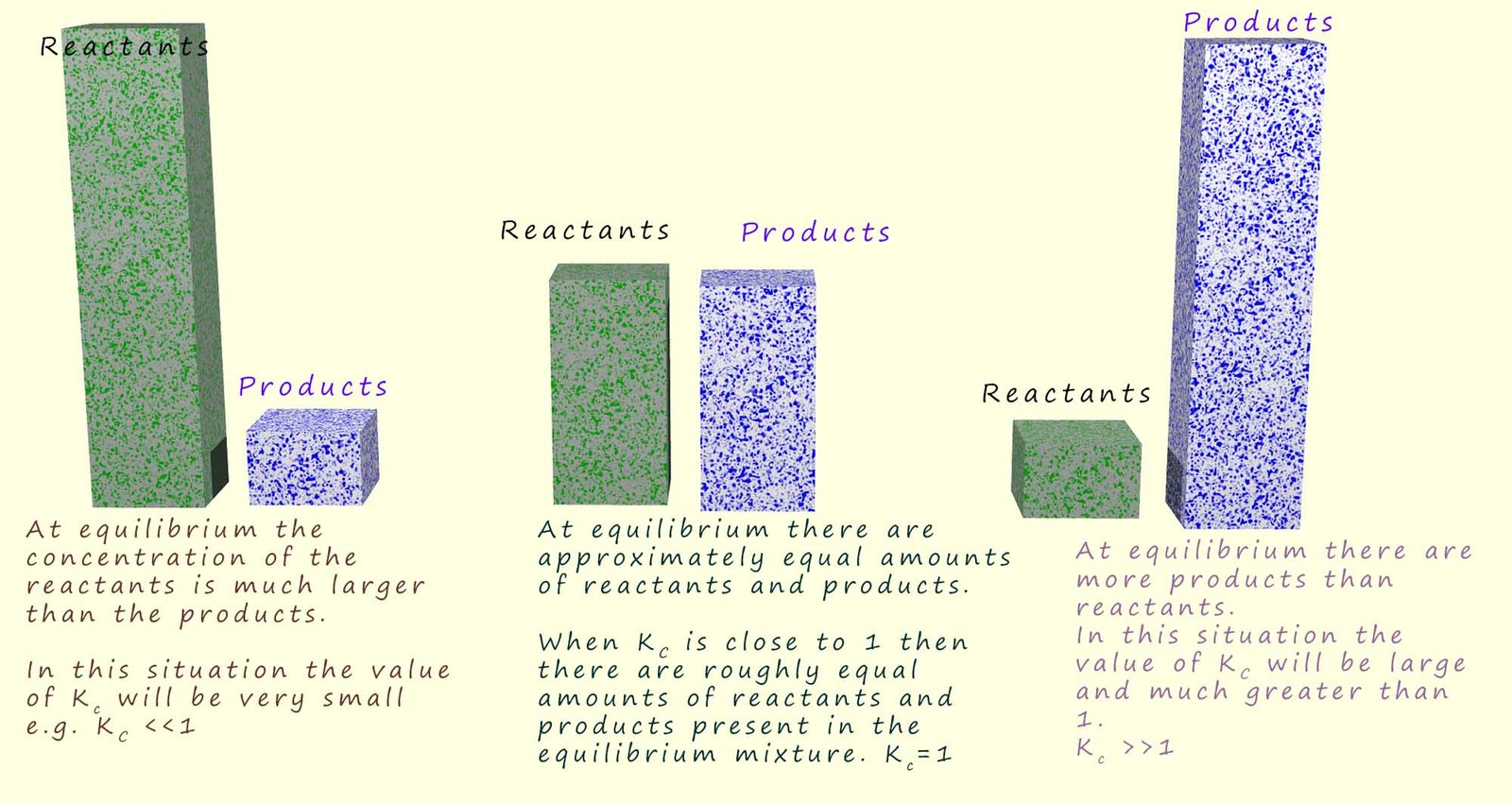
You can use Le Chatelier's principle to predict what will happen to the value of Kc when the reaction conditions are altered by changing say the temperature, concentration or pressure.
For example consider what happens to the value of Kc for a reaction when the temperature is changed. Remember that Kc is the ratio of [products]/[reactants], so when the reaction conditions are changed ask yourself what happens to the concentration of the reactants and products, from this you should be able to explain what happens to the value of the equilibrium constant Kc.

As an example consider the reaction shown below:
You should be able to make similar arguments to explain what will happen to the value of Kc when the concentration or pressure of the reactants or products are changed. This is discussed in detail on the page which deals with Le Chatelier's principle.